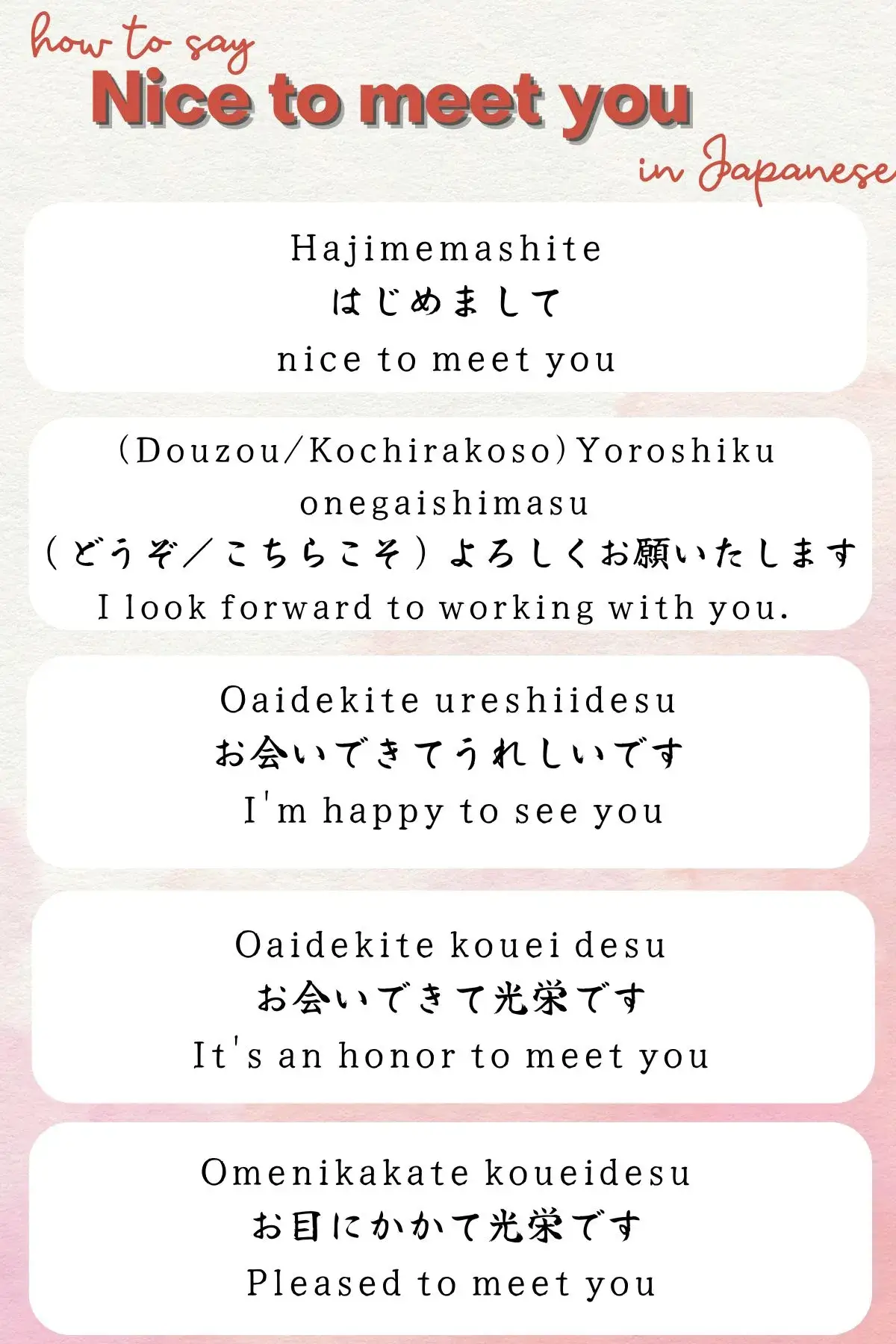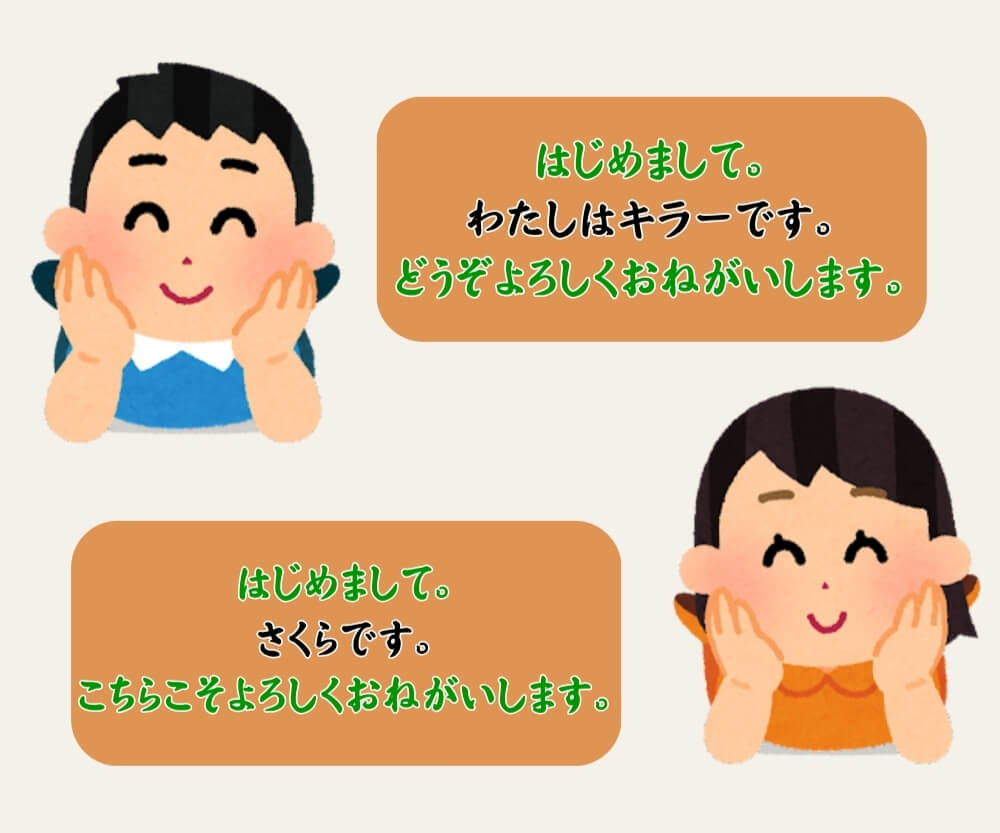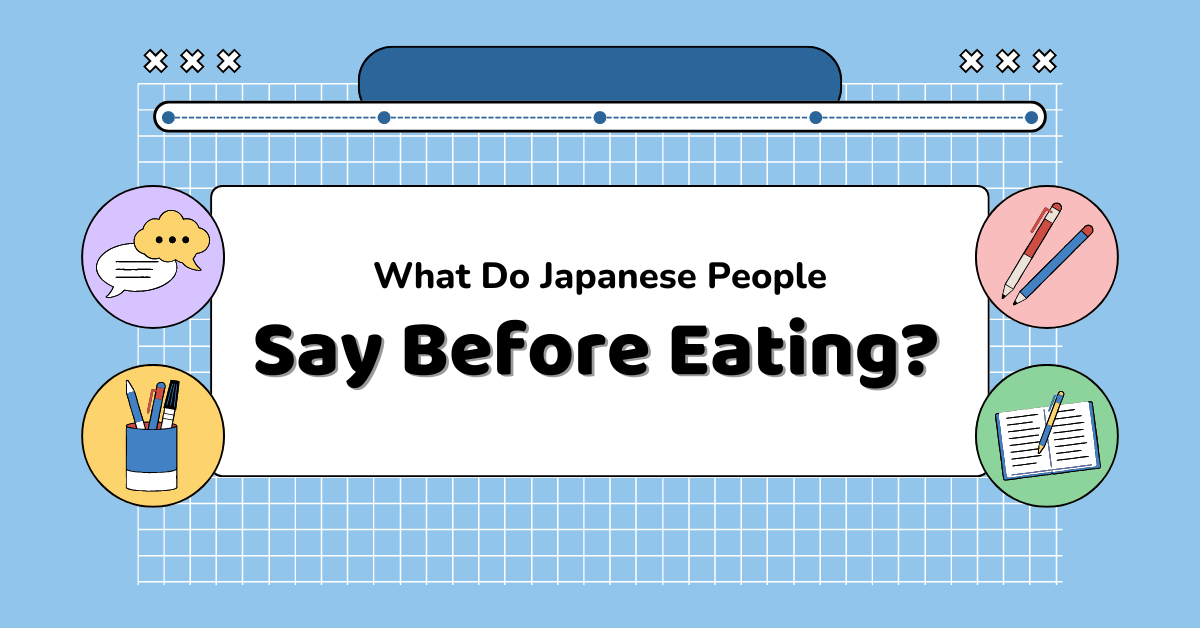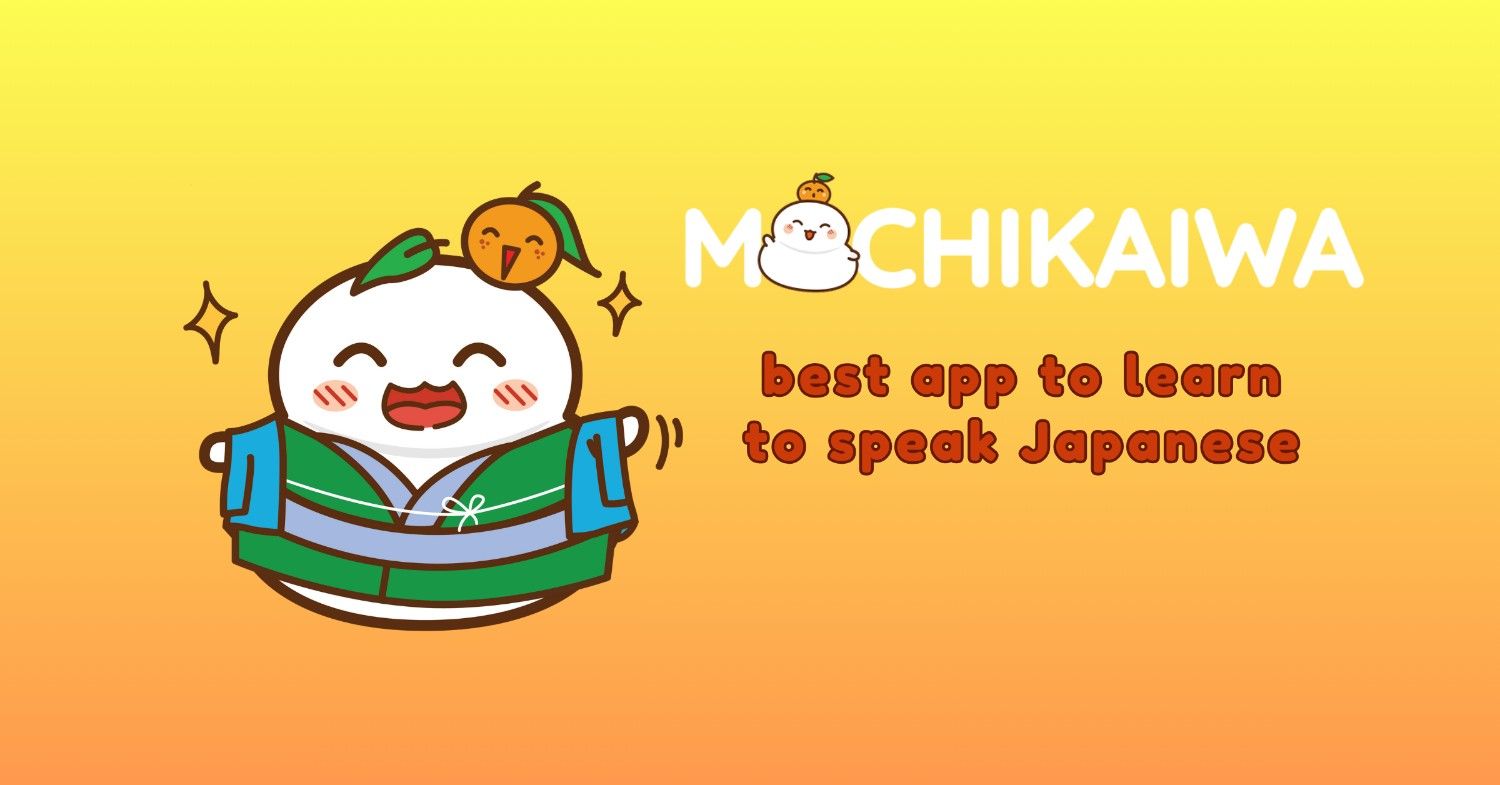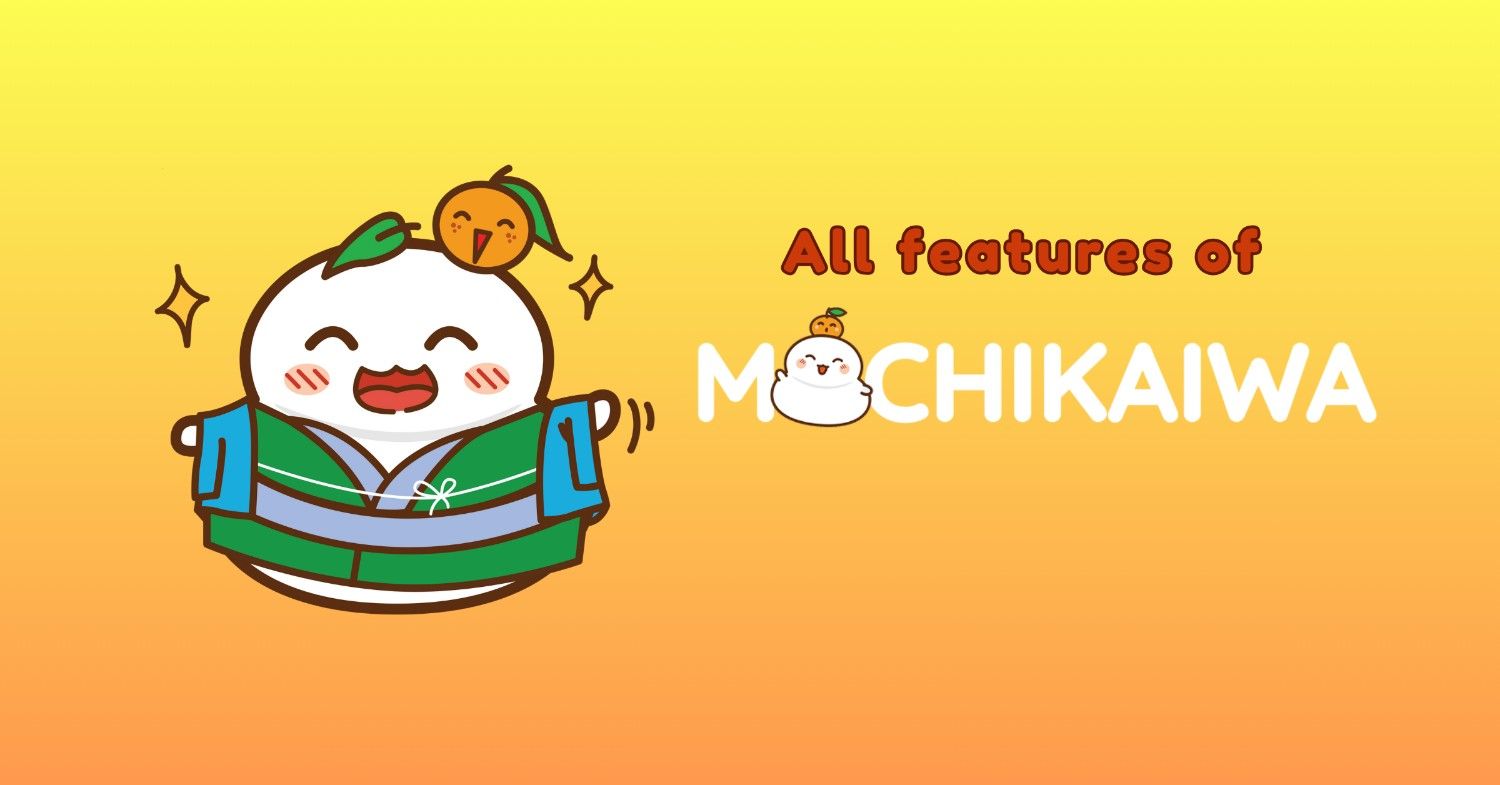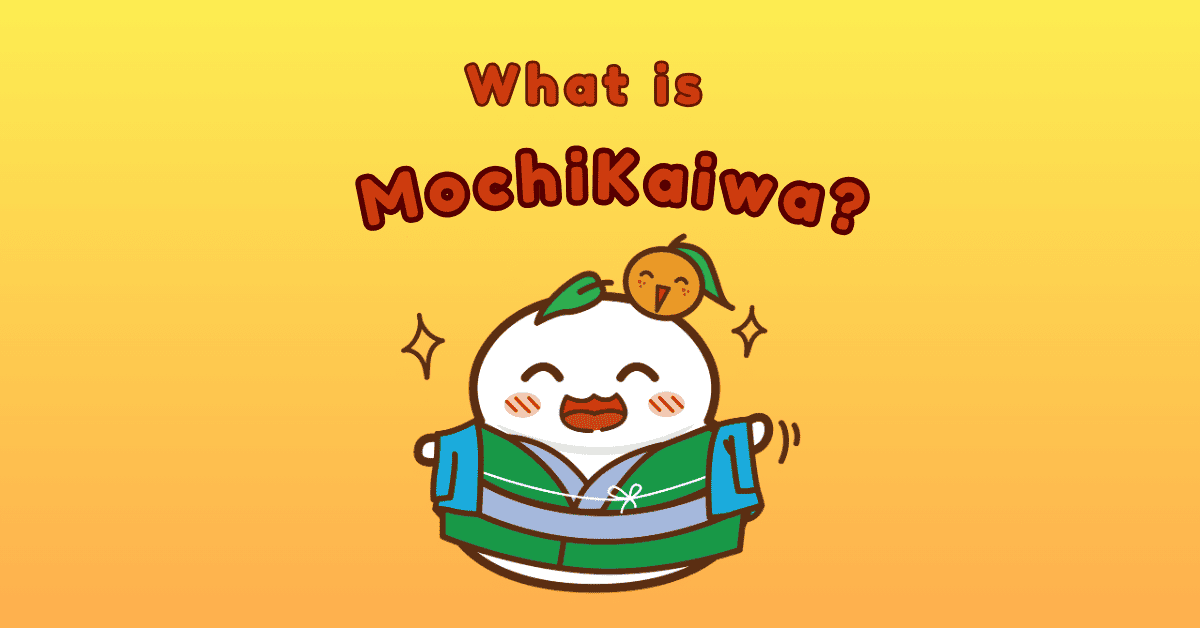In Japanese culture, greetings and introductions hold great importance. Whether you’re meeting someone for the first time or simply want to be polite, knowing the right phrases can make a big difference. This is because Japanese society places a strong emphasis on respect and proper etiquette. Mastering a few key phrases for saying “nice to meet you” is a fantastic way to make a positive first impression. These phrases not only show that you respect the person you are meeting but also demonstrate your effort to understand and appreciate their culture. Learning these phrases can help you build better relationships and show that you are considerate and thoughtful.
- Common ways to say “Nice to meet you” in Japanese
- Other ways to say “Nice to meet you” in Japanese
- How to remember Japanese phrases easily
- Japanese phrases for meeting the first time (greeting conversation)
- FAQs

Common ways to say “Nice to meet you” in Japanese
The most common way to say “nice to meet you” in Japanese is “はじめまして” (初めまして – Hajimemashite).
It is a common way to introduce yourself when meeting someone for the first time or in a formal setting, such as an introduction at a business or social gathering.
Another important phrase is “よろしくおねがいします” (よろしくお願いします- Yoroshiku onegaishimasu). It means “Take care of me” or “I look forward to working with you.” This phrase often used at the end of greetings or self-introduction to express your desire to work well together or to have a good relationship with the person you’re meeting. Therefore, it is a common phrase used in Japanese culture to establish good rapport and mutual respect.
1. はじめまして (Hajimemashite)
This is the standard way to say “nice to meet you” when meeting someone for the first time. It’s appropriate for both formal and casual situations, marking the beginning of an introduction.
2. どうぞよろしくお願いします (Douzo Yoroshiku Onegaishimasu)
Often said after Hajimemashite, this phrase expresses hope for a positive relationship moving forward. It’s a polite way to convey “please treat me well” or “I look forward to working with you.” In casual settings, it can be shortened to Yoroshiku.
3. こちらこそ (Kochirakoso)
This is used in response to Yoroshiku Onegaishimasu and means “likewise” or “the pleasure is mine.” It’s polite and can be used in both casual and formal contexts.
4. お会いできて嬉しいです (Oaidekite Ureshii Desu)
A formal way to express “I’m happy to meet you,” conveying warmth and politeness. It’s often used in more formal introductions, reflecting excitement or happiness in meeting the other person.
5. お会いできて光栄です (Oaidekite Kouei Desu)
This is a very formal phrase that means “It’s an honor to meet you.” It’s often used when meeting someone of higher status, showing deep respect and humility.
6. お目にかかれて光栄です (Omenikakarete Kouei Desu)
An even more formal expression of “It’s an honor to meet you,” used in highly respectful or professional situations. It conveys a sense of privilege when meeting someone important.
Other ways to say “Nice to meet you” in Japanese
We already learned how to say “Nice to meet you” with “はじめまして” and “よろしくお願いします” But Japanese has even more ways to greet someone politely for the first time! This section will show you some other formal greetings you can use depending on the situation. This will help you sound professional and make a good impression.
1. どうぞよろしくおねがいします (どうぞよろしくお願いします)
Meaning: Please take care of me
Romaji: Douzo yoroshiku onegai itashimasu.
Secondly, this softens the formality of “Yoroshiku Onegaishimasu” slightly and adds “どうぞ (douzo)” which translates to “please.” It is often used in formal settings, such as business meetings or when you want to show a high level of respect.
2. こちらこそよろしくおねがいします (こちらこそよろしくお願いします)
Meaning: Please treat me well./ I look forward to working with you,”
Romaji: Kochirakoso yoroshiku onegaishimasu
It is a polite way to reciprocate someone’s goodwill and express your own willingness to establish a positive relationship when meeting someone for the first time
3. おあいできてうれしいです (お会いできて嬉しいです)
Meaning: I’m glad to meet you./ I’m happy to see you.”
Romaji: Oaidekite ureshiidesu.
This is a polite and formal way to say “nice to meet you” in Japanese. You can use it when meeting someone for the first time or when seeing someone you haven’t seen in a while.
お会いできて (Oaidekite): This phrase combines the verb 会う (au) meaning “to meet” with the particle て (te) which forms the gerund, and the adverb でき (deki) meaning “can” or “able to.” Together, it means “to be able to meet.”
うれしいです (Ureshii desu): This phrase combines the adjective 嬉しい (ureshii) meaning “happy” or “pleased” with the verb です (desu) which is the polite form of the verb “to be.” It expresses your feeling of happiness or pleasure.
4. おあいできてこうえいです (お会いできて光栄です)
Meaning: It’s an honor to meet you
Romaji: Oaidekite kouei desu
Oaidekite Koueidesu (お会いできて光栄です) is an elegant and formal Japanese phrase used to express your sincere pleasure and honor at meeting someone for the first time. It’s a versatile expression that can be used in various settings, from business meetings to social gatherings.
5. おめにかかてこうえいです(お目にかかて光栄です)
Meaning: Pleased to meet you/ It’s an honor to meet you
Romaji: Omenikakate kouei desu
This is a formal and polite way to say “nice to meet you” in Japanese. It expresses your honor and gratitude for the opportunity to meet someone. Moreover, this is commonly used in business settings, formal gatherings, or when meeting someone for the first time who is of higher status or seniority.
To expand your vocabulary further, try using MochiKanji, a helpful app for learning Japanese. It offers fun, interactive methods to remember words effectively, making it easier to reach your language goals.
How to remember Japanese phrases easily
Start simple phrases
Begin your Japanese language journey with basic phrases that you’re likely to use frequently. Such as “おはようございます” (Good morning), and “こんばんは” (Good evening), はじめまして (Nice to meet you),… Starting with simple phrases builds confidence and provides a foundation for more advanced learning.
Practice regularly
Consistent practice is essential for language learning. Set aside time each day to practice Japanese phrases. Repetition reinforces memory and improves fluency. Whether it’s through flashcards, speaking with native speakers, or watching anime, video, or listening to podcasts,…
Utilize Learning Tool
One effective way is to use language learning apps like MochiKanji app, which focus on vocabulary and phrases in Japanese. Here’s how you can use such an app to improve your Japanese.
- Daily practice. Set aside a few minutes each day to practice with the MochiKanji app. Consistent practice helps reinforce your memory and understanding of Japanese phrases such as greeting, hobbies, going shopping,…
- Flashcards. Many language learning apps, including MochiKanji, use flashcards to help you memorize vocabulary and phrases. Review the flashcards regularly, focusing on both the meaning and pronunciation of the phrases.
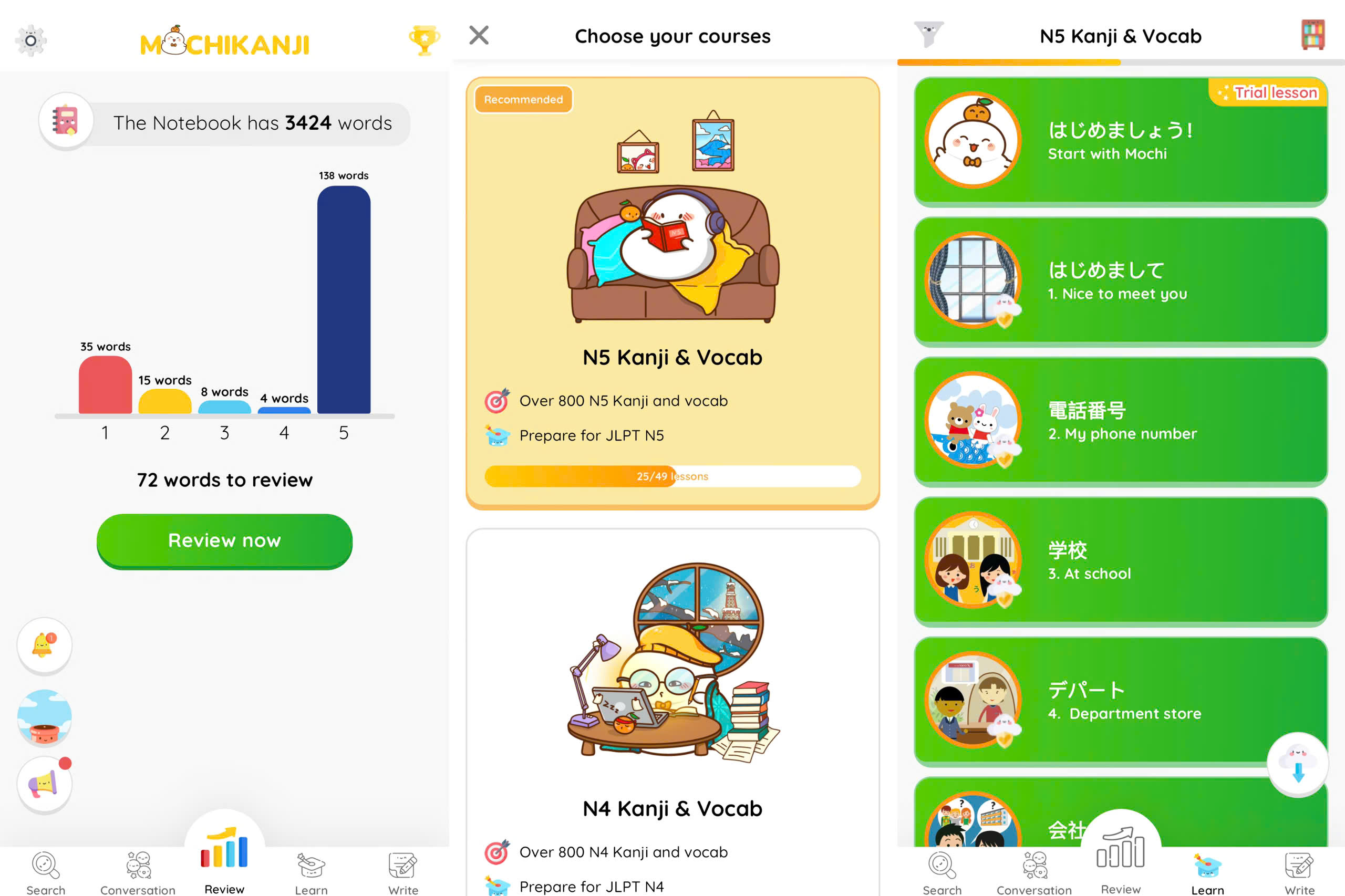
MochiKanji is a language learning app that leverages the effectiveness of flashcards to help you master Japanese kanji. Each flashcard is designed to reinforce both the meaning and pronunciation, making it easier to commit new kanji to memory. By reviewing these flashcards regularly, you can steadily build your kanji knowledge and improve your reading and writing skills in Japanese.
- Interactive exercise. Engage with the interactive exercises provided by the app. These exercises often include quizzes, games, or listening activities that make learning more engaging and enjoyable.
- Use Spaced Repetition system. MochiKanji examines your learning track record and prompts you to revisit Kanji at the “Golden Time” – the crucial moment just before you’re on the brink of forgetting Kanji and vocabulary. Studying during this optimal period aids in memorizing 1000 Kanji within a month.
By incorporating these strategies and using apps like MochiKanji, you can effectively remember Japanese phrases and improve your overall proficiency in the language.
Japanese phrases for meeting the first time (greeting conversation)
When meeting someone for the first time in Japan, it’s customary to exchange polite greetings and introduce yourself. Here is a conversation about meeting for the first time.
Person A: はじめまして、わたしは [Your Name] です 。どうぞよろしくお願いします。(Hajimemashite, watashi wa [Your Name] desu. Douzo yoroshiku onegaishimasu.)
Person B: 初めまして、[Your Name] です。こちらこそよろしくお願いします。(Hajimemashite, [Your Name] desu. Kochira koso yoroshiku onegaishimasu.)
Example:
Mr.Kira: はじめまして。わたしはキラーです。よろしくおねがいします。(hajimemashite. watashi wa Mira desu. yoroshiku onegaishimasu.)
Mrs.Sakura: はじめまして。さくらです。こちらこそよろしくおねがいします。(hajimemashite. Sakura desu. yoroshiku onegaishimasu.
In conclusion, understanding the various ways to say “Nice to meet you” in Japanese provides valuable insight into the language’s rich cultural nuances and expressions of politeness. Each phrase carries its own tone and level of formality, allowing speakers to tailor their greetings to different social contexts.
By mastering these simple phrases, you can confidently and politely introduce yourself and express your pleasure at meeting someone new in Japanese. Remember, practice makes perfect! With a little effort and the help of resources like MochiKanji or MochiKana, you’ll be making great first impressions in Japanese in no time. Don’t be afraid to make mistakes – embrace the learning process and enjoy the journey of mastering Japanese greetings!
FAQs
Which “Nice to meet you” should I use ?
For first-time introductions: Always start with Hajimemashite. This is the proper phrase to use when you meet someone for the first time.
For follow-up or ongoing relationships: After saying Hajimemashite, you can follow up with Yoroshiku onegaishimasu to express a desire for a positive future relationship.
In casual settings: If you’re in a relaxed, informal setting, you might just say よろしく (Yoroshiku) without the formality of Hajimemashite, especially if you already know the person.
How do you say nice to meet you in Japanese politely?
To say “nice to meet you” politely in Japanese, you can use the phrase どうぞよろしくお願いします (douzo yoroshiku onegaishimasu). This phrase is commonly used in formal situations and when meeting someone for the first time. It conveys a sense of politeness and a request for favorable relations.
Is douzo yoroshiku formal?
Yes, どうぞよろしくお願いします (douzo yoroshiku onegaishimasu) is considered formal and polite. It is used in both business settings and when meeting someone for the first time to express a respectful request for a positive relationship.
How do you say “nice to meet you” in Japanese Duolingo?
On Duolingo, you will commonly see the phrase はじめまして (hajimemashite) used to say “nice to meet you.” This phrase is typically introduced in introductory lessons and is a standard way to greet someone when meeting them for the first time.
Is hajimemashite nice to meet you or how do you do?
はじめまして (hajimemashite) is translated as “nice to meet you” in Japanese. It is used specifically when meeting someone for the first time. While it can be akin to “how do you do?” in English, its primary function is to express the sentiment of meeting someone new rather than inquiring about their well-being.

